Identifying Florida Shell Egg Casings
By Sarah Rosenbaum

When winter and spring arrive, beachcombers along the Gulf of Mexico start to see strange things wash up on the shore. Often mistaken for pieces of plastic, garbage and even animal remains, the egg casings of mollusks make their appearance in the water and on the beaches.

Most beachcombers I know will take the time to pick up any trash or garbage they see on the beach, which is why I think it’s important to recognize these egg casings. When I first encountered a moon snail egg casing, I mistook it as a plastic O-ring or a piece of man-made trash, so I added it to my handful of garbage I collected that day and threw it away. I was horrified to later discover it was an egg casing that included little embryos of baby shells!
Small mollusks such as the prized wentletrap lay microscopic eggs under the sand in a sort of stringy mucus. It is unlikely we will encounter eggs from a tiny species like this because the mucus dissolves as the eggs hatch, virtually erasing the presence of the eggs. You may encounter egg casings from some species that are larger, which leave behind a distinct egg casing even after hatching.
Egg Casing Identification
Below are some photos and descriptions to help you identify egg casings you may encounter.
Whelks
At first sight, whelk egg casings are often confused with a shed snake skin due to their long, coiled appearance. Most whelk egg casings have this same general spiral; however the shape of each “disk” on the strand and the length of the strand as a whole may vary per type of whelk.
The whelk egg casings are often secured to the ocean floor by having one end buried in the sand, allowing the strand to free float in the water. When ready to hatch, the baby whelks will eat a hole in the top of the disc and begin their life swimming in the water column.

Lightning Whelk. One of the largest and most distinct egg casings in Southwest Florida is the lightning whelk (above and on page 26). These strands can be anywhere from 11 to 33 inches long. The baby whelks inside the eggs can often be seen through the thin disc walls.
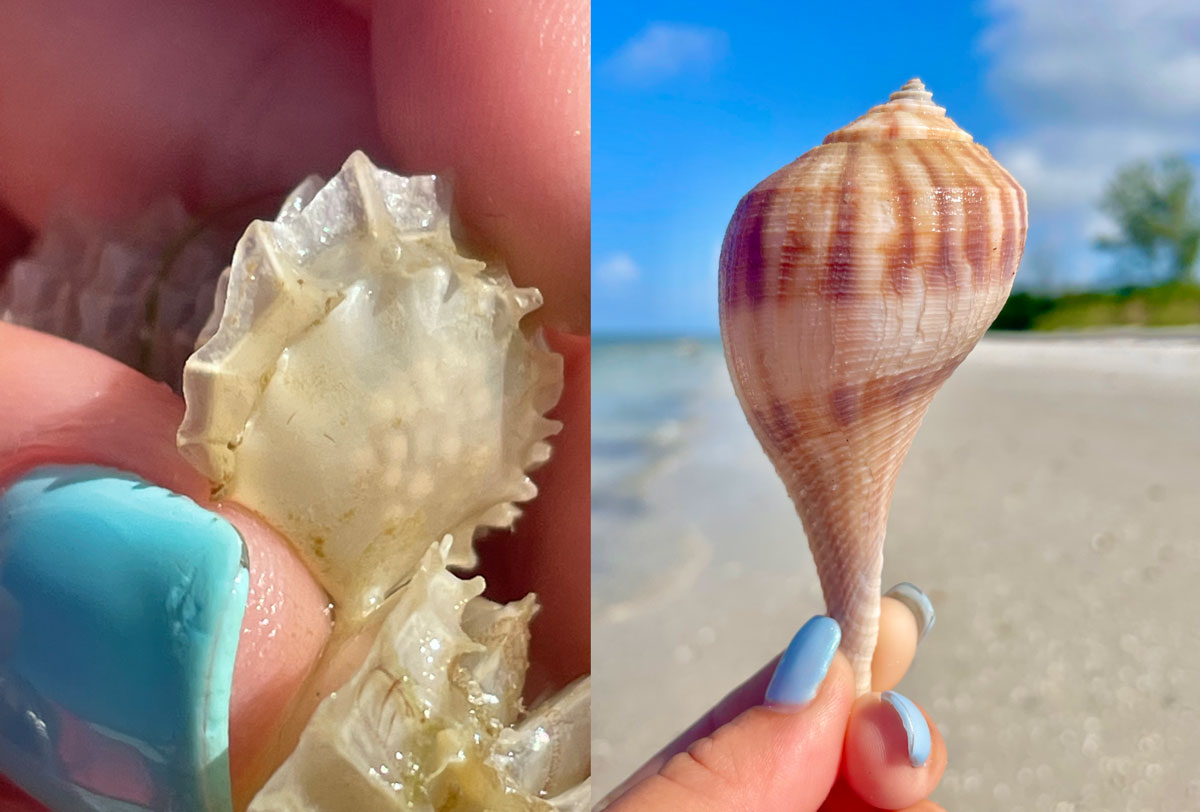
Pear Whelk. Pear whelk egg casings are similar to the Lightning Whelks but are much shorter strands and feature discs that are much smaller in diameter. These strands may only measure 6–12 inches in length.
Murexes
Murex egg casings display a different structure system than the whelks. Each egg pouch is individually laid. Often attached to a solid anchoring object on the ocean floor like a rock or heavy shell, beachcombers may see them inside washed-up pen shells or cockle shells.

Apple Murex. The apple murex lays eggs communally, meaning multiple females lay their eggs in a mass together with other murex eggs. These appear in large bundles of small, balloon-shaped pouches stuck together that resemble Styrofoam. These masses are often sticky and quite large due to the quantity of egg casings included in the mass. The size of such a mass can range from a softball to that of a large dinner plate.
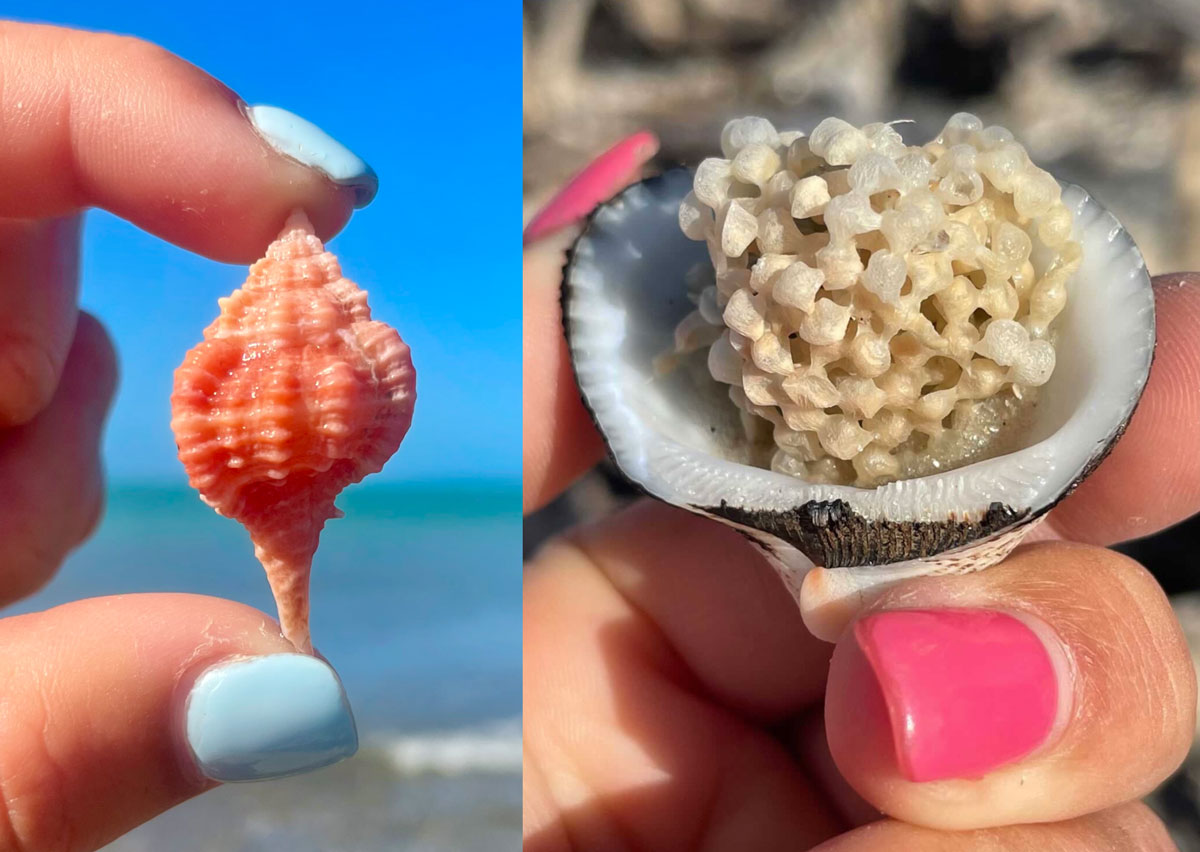
Rose Murex. Rose murex egg casings resemble apple murex eggs but are much smaller in size, both in the size of the capsules and in quantity. To my knowledge, rose murexes do not lay eggs in communal groups. These smaller masses of eggs could fit inside a small scallop shell comfortably.
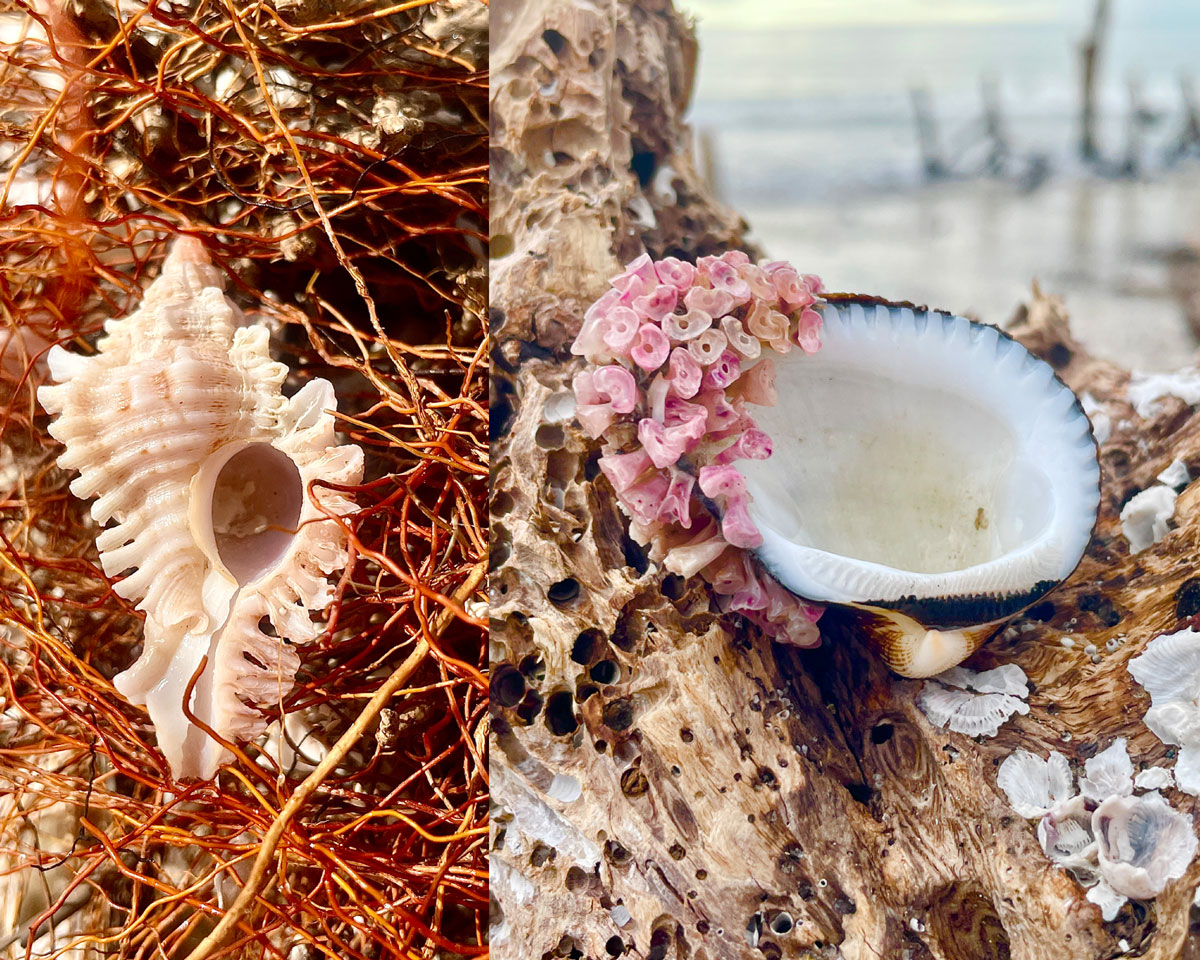
Lace Murex. The lace murex eggs are laid one by one and are attached individually to an anchoring shell or rock, rather than being stuck to each other. The capsules are shaped like a thin triangle and have a slight purple tinge to their color, unlike most egg casings which appear beige.
Tulips
The tulip shells found in Southwest Florida are the true tulip and the banded tulip which is more common. These egg casings are found in small “bouquets,” bundled together at the base, although they are individually laid. Again, beachcombers may find these anchored to rocks or heavy shells, meant to stay submerged underwater until hatching. The size and general shape of the egg casings of tulips are extremely similar, but there is a distinct difference in the top lip of the blossom shaped egg capsules.

True Tulip. These beautiful egg casings have a distinct ruffle along the top lip edges of the egg capsule.
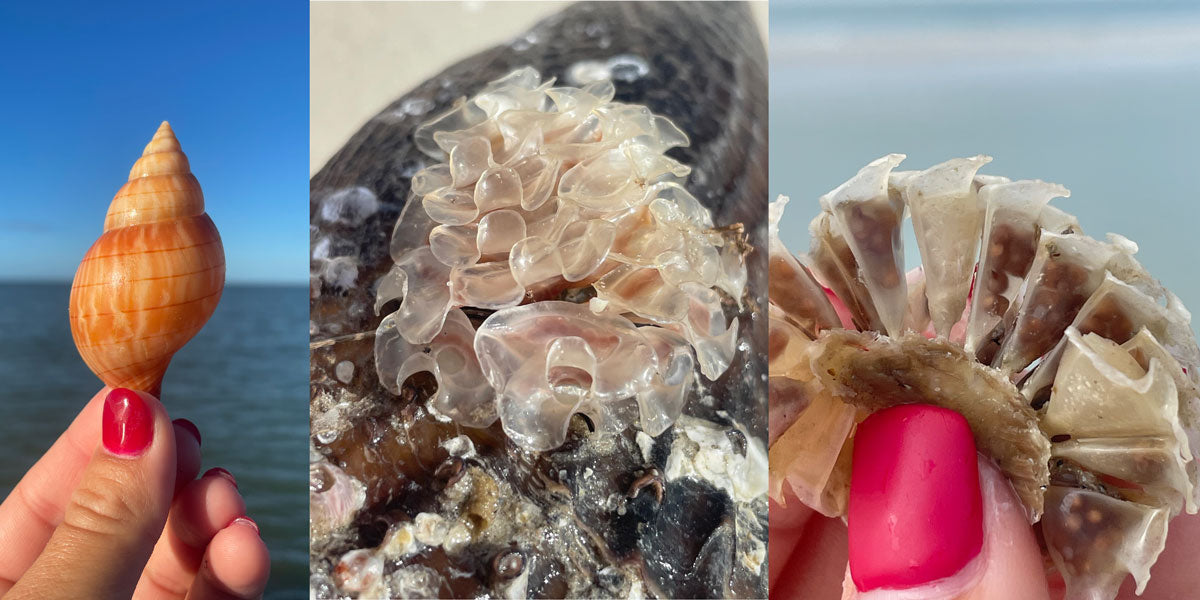
Banded Tulip. Banded tulip eggs have a more streamlined, less ruffled shape to their capsules, while still maintaining the overall shape of a tulip egg.
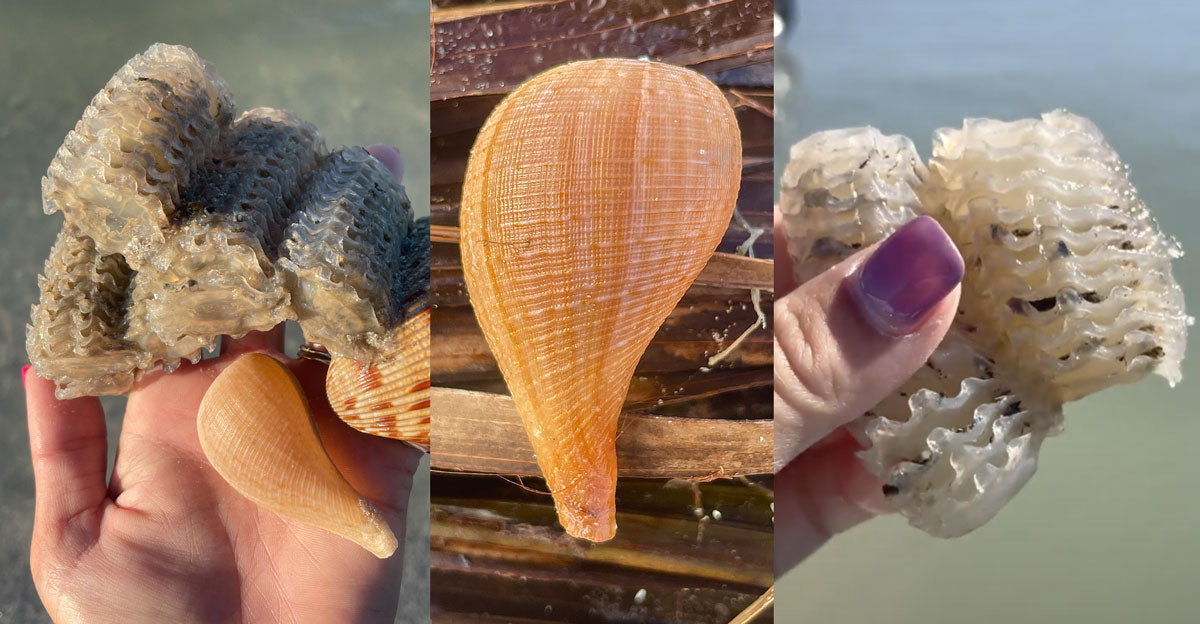
Atlantic/Paper Fig Snail. The Atlantic fig, also known as a paper fig snail, is very difficult to find in one piece. The fragile nature of the shell makes it easy to chip, and beachcombers rarely find it without holes. The egg casings are even more uncommon to come across and are similarly shaped to the capsules seen in whelk egg strands. In this case however, the capsules are stacked together, appearing almost fused together and attached on one side, making them into a strand of their own. These strands resemble corn cobs.
Moon Snails

Moon snail egg casings (Barbara Smith).
The main two species of moon snails found in Southwest Florida are the shark eye and the gaudy nautica. The egg casings for these two are, to my knowledge, nearly identical to other moon snail egg casings.
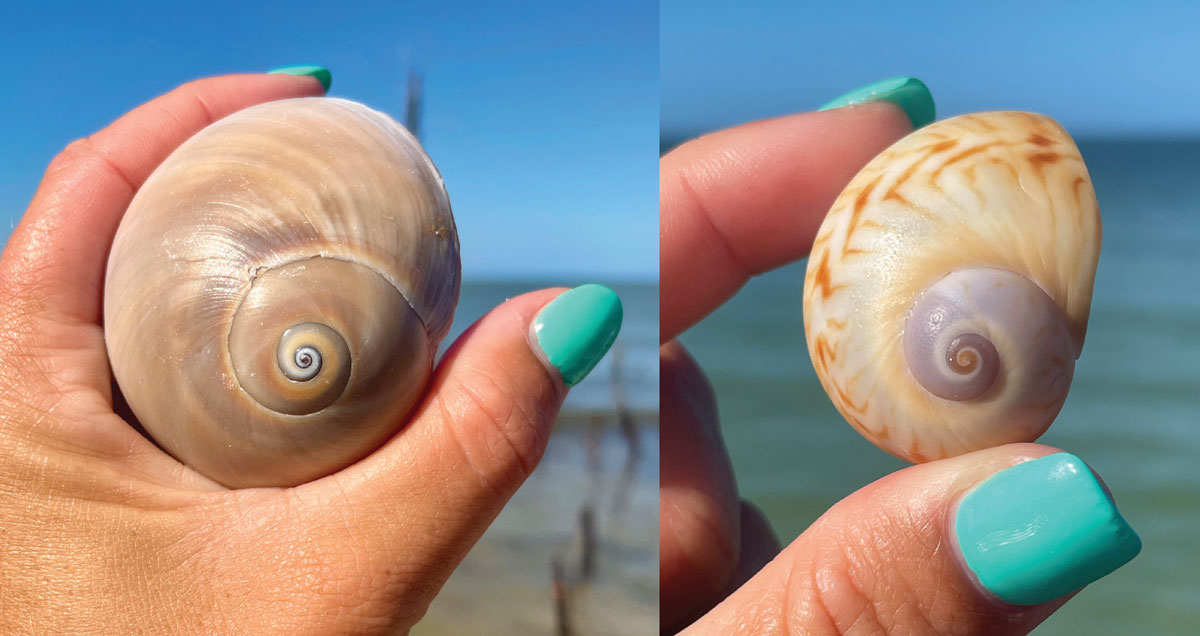
Moon Snails. Shark eye and gaudy nautica eggs are embedded into flexible, thin membrane layers mixed with sand. These are called “Sand Collars” due to the crescent shape and sandpaper texture. As these are extremely thin and mostly made of mucus and sand, they are nearly impossible to preserve.
Conchs
The conchs are some of the most iconic shells in the world. The image of various conchs have decorated logos, marketing material, and even national flags. That being said, very few people have seen the egg casings where little baby conchs start their lives.
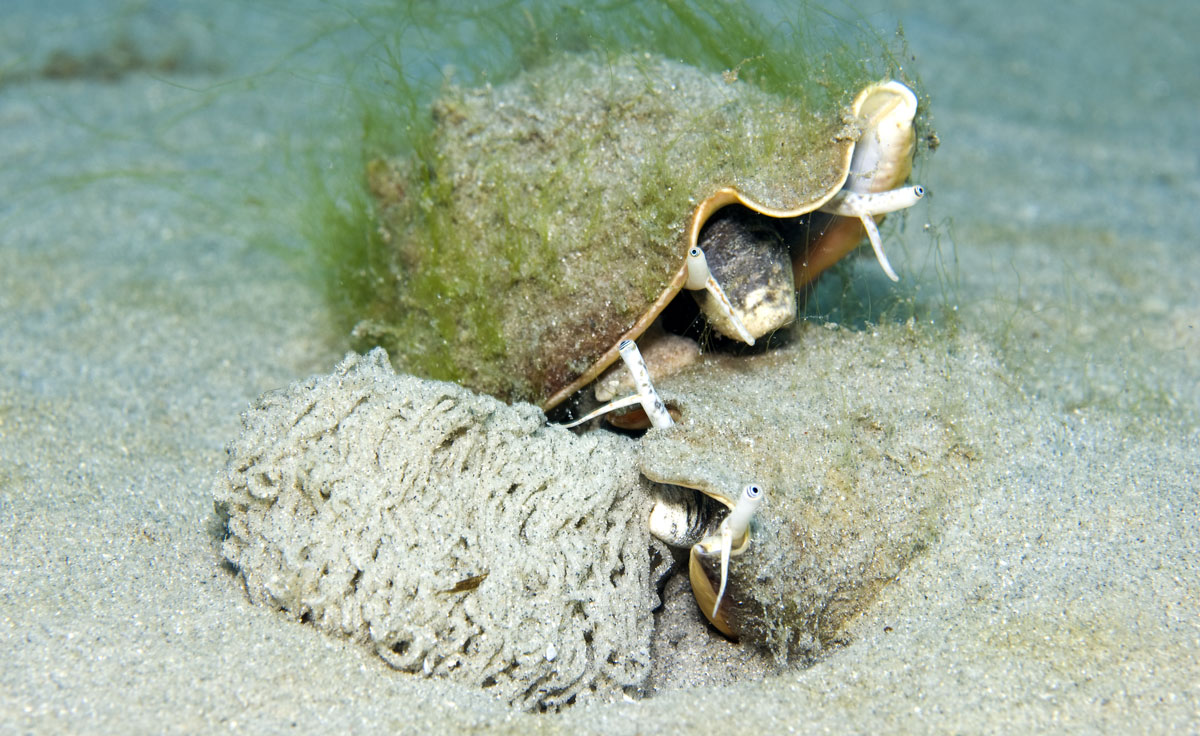
Florida fighting conch (Strombus alatus) pair laying a large egg mass on the sand, Gulf Stream, Florida, USA (Alex Mustard / NPL / Minden Pictures).
Florida Fighting Conch. The most common conch found in the Ten Thousand Islands is the Florida fighting conch. These egg casings are never seen washed ashore because they are made in a dissolving gel type formation. I’ve only seen photos of these while they were underwater, and often the photo was taken while the conch mother was laying them.
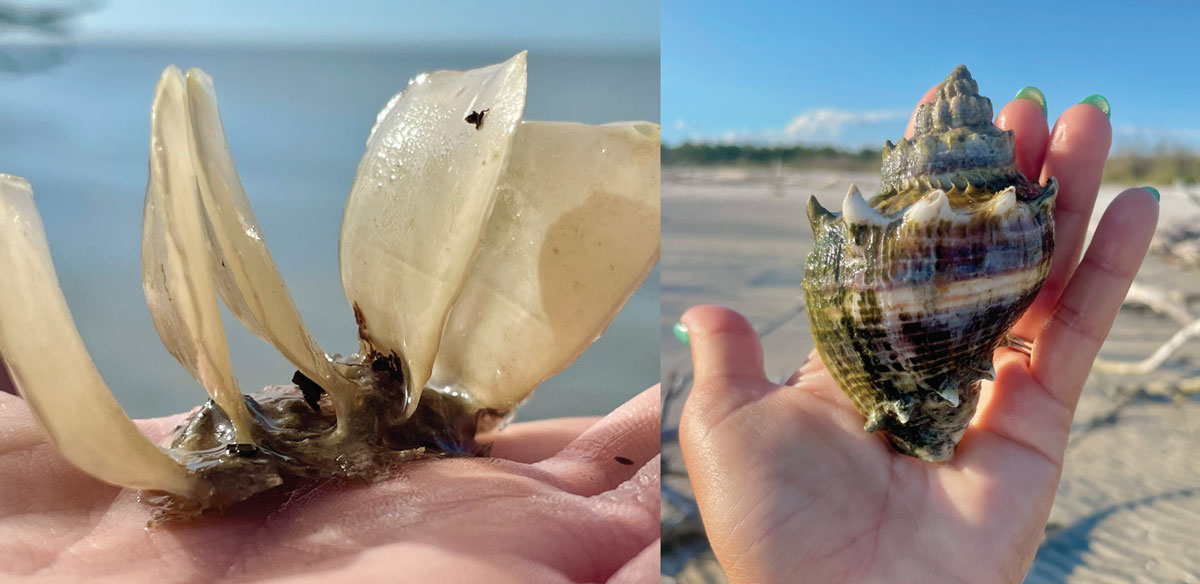
American Crown Conch. The American crown conch is also known as a king crown conch. These conchs lay eggs in a straight line with round, disc-shaped capsules, individually anchored to a submerged object.
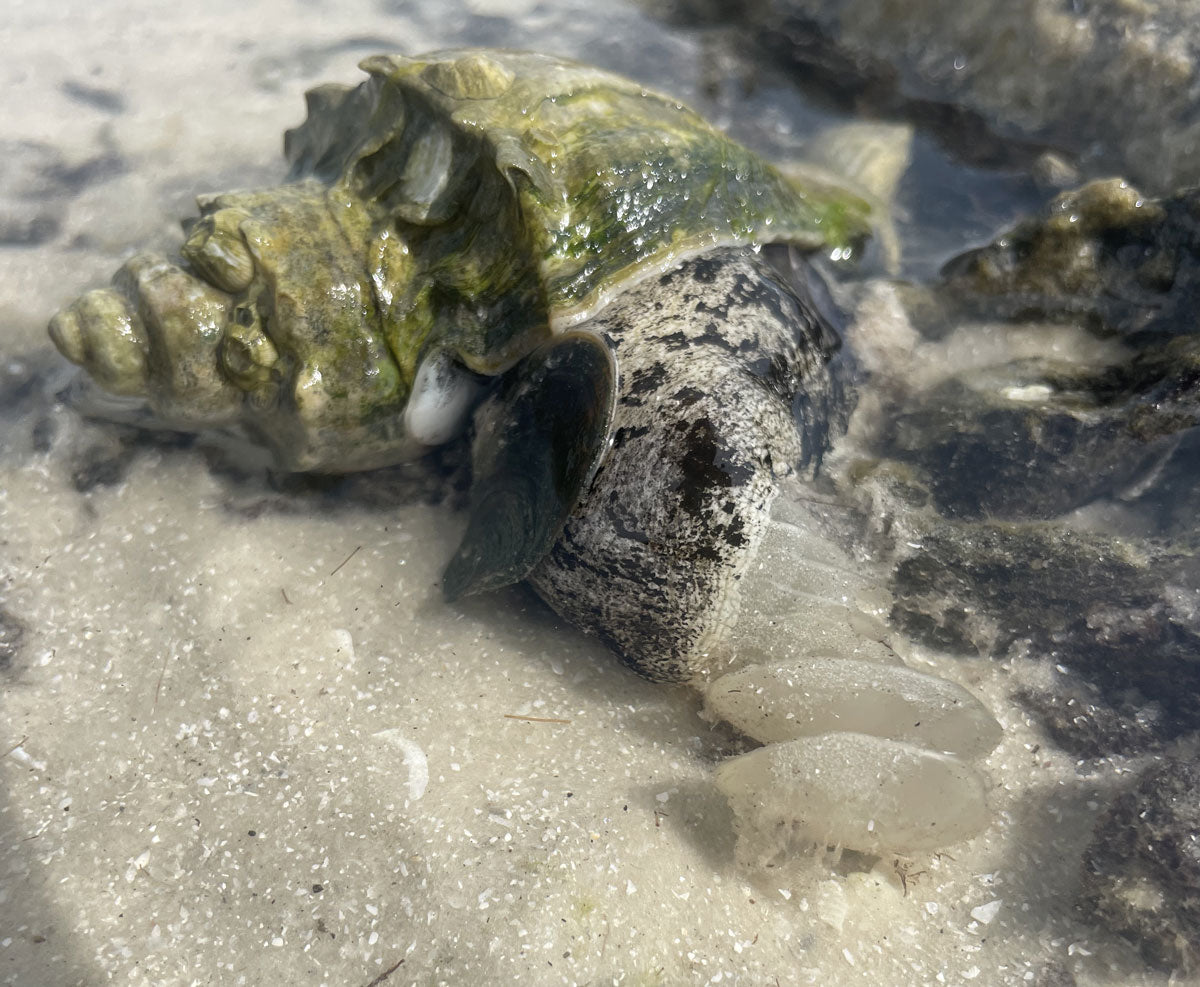
This species prefers mucky, muddy water and can be found in lagoons and marshes. These eggs are often seen in the mud at very low tides.
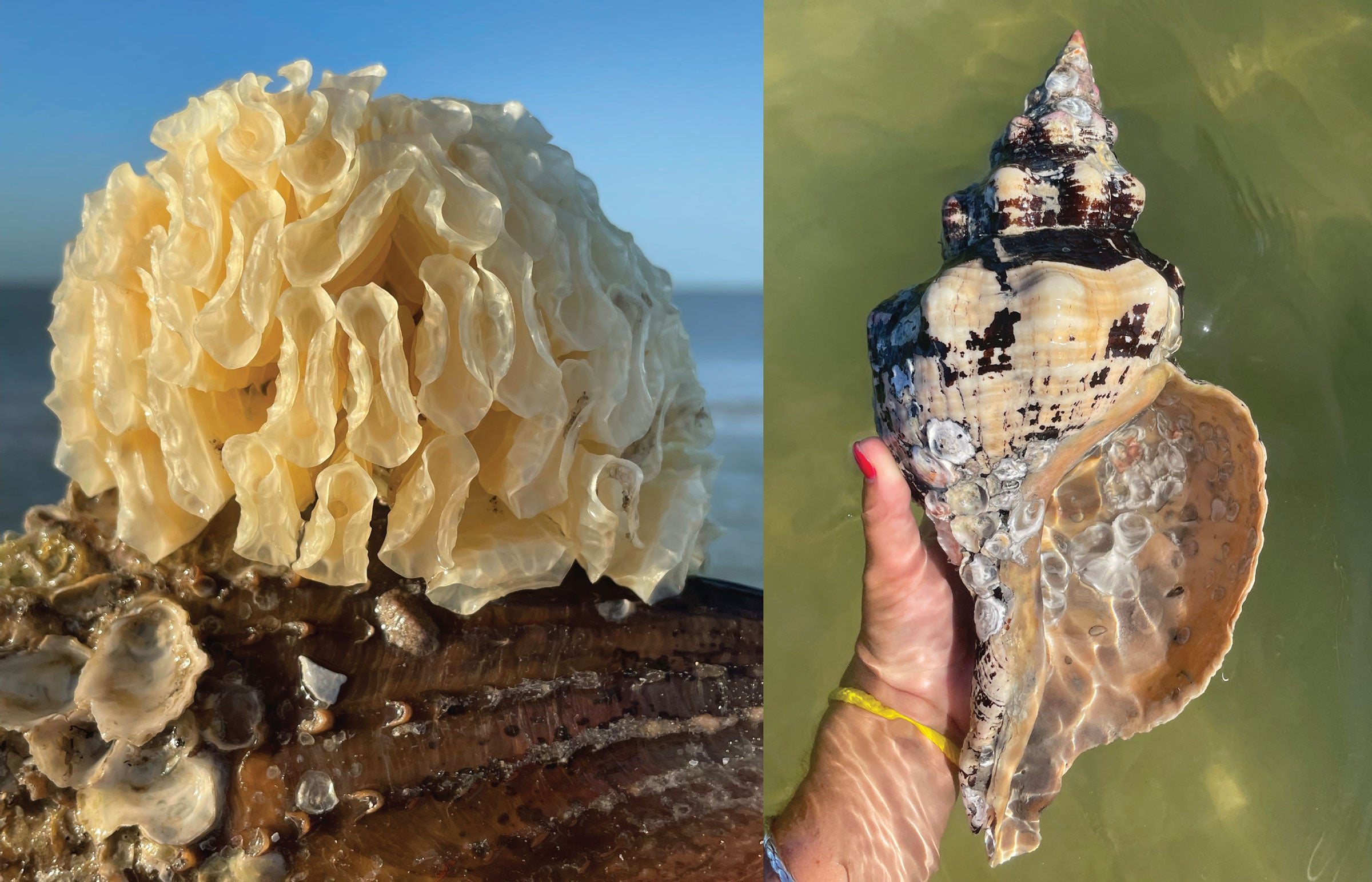
Horse Conch. Horse conch eggs much resemble the popular corn snack Bugles. These capsules are attached together in a large, fluffy bundle with the flat end of the “bugle” facing out. The bundle of “bugles” as a whole can be as large as a loaf of bread. These egg casings can contain hundreds of baby horse conchs and it’s important to note that this entire bundle is produced by a single female.
Collection and Display
Collecting egg casings can be a fun, scientific way to add to your shell collection. However, it is not okay to keep a live and active egg casing. Some people enjoy collecting them for the tiny shells inside but I only condone this if the eggs are dried up and clearly expired. My rule of thumb is, if it’s still wet and hydrated, leave it in the water. I equate this with taking live animals from the beach, which is illegal in our area and highly discouraged for the preservation of the ecosystem.
There are lots of ways you can display your egg casings and baby shells if you’re able to find any. I prefer to place them in glass vases along with my shell collection, but there are so many creative people out there with all kinds of ideas. I recently discovered that all of my egg casings are reactive under a UV or black light. Feel free to use that as an inspiration for your collection.
Below are photos of some of the baby shells I’ve collected from dried up and expired egg casings.

Happy shelling everyone!
All images by Sarah Rosenbaum except as marked.
Learn more about seashells
Learn more about identifying shells, the history of seashell collecting, great shelling beaches, and the lives of the animals who make the shells we find on the beach. Articles ›
No live shelling: Be sure shells are empty and sand dollars, sea stars, and sea urchins are no longer alive before you bring them home.
This article appeared in the Beachcombing Magazine March/April 2023 issue.
3 comments
I find this article to be very helpful. Thank you so much! However, I have egg casings that I still cannot identify. Could I send you a picture?
I have a shell, egg looking thing I found in key west and I have yet been able to figure out what it is. Any help would be greatly appreciated.
Thank you so much for this article. Having the eggs and shells side by side was fascinating. I spent an hour on google trying to id the moon snail case and this was great.







